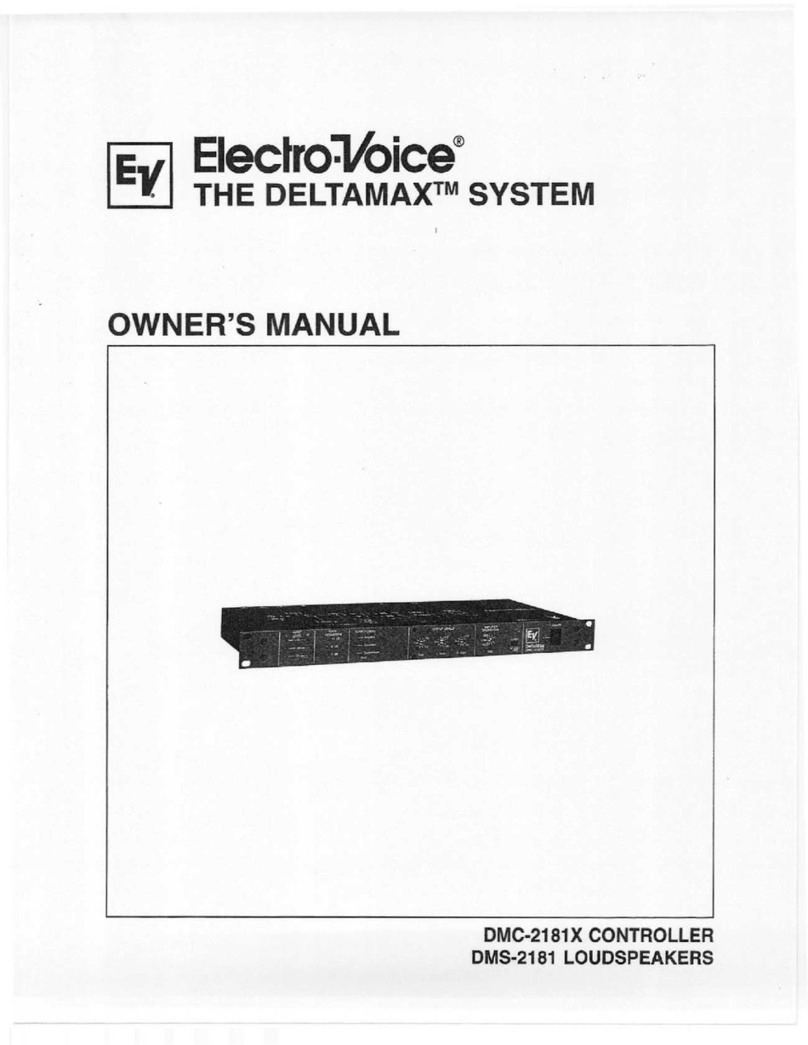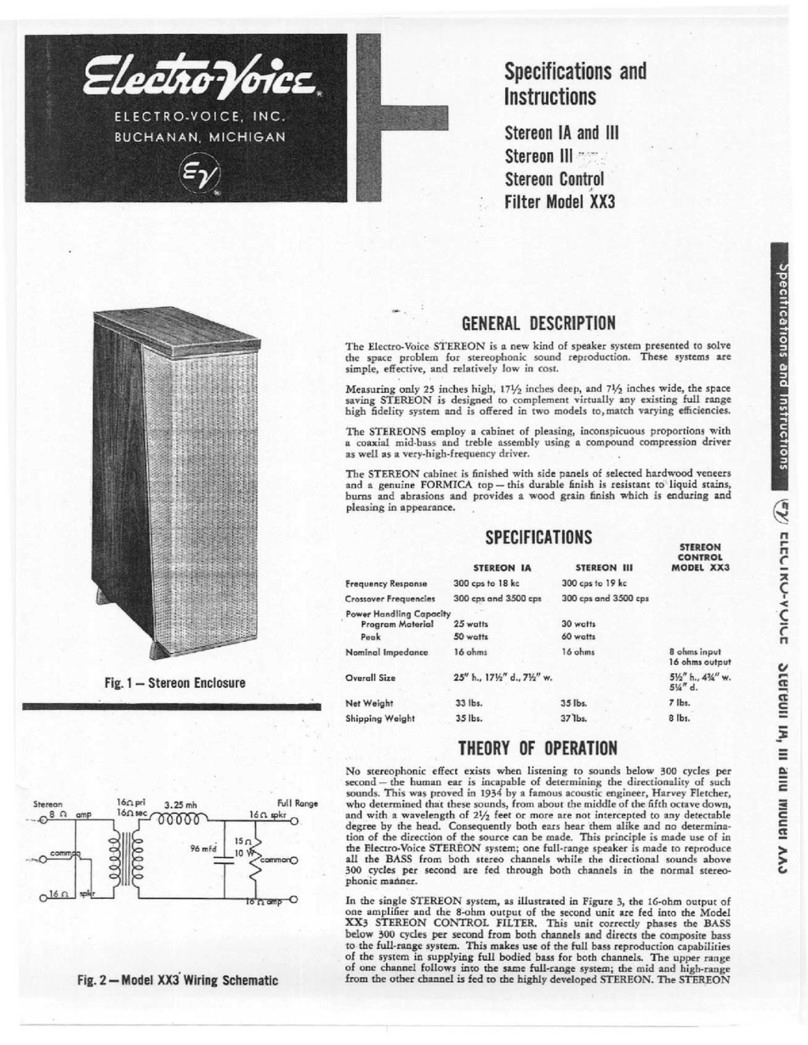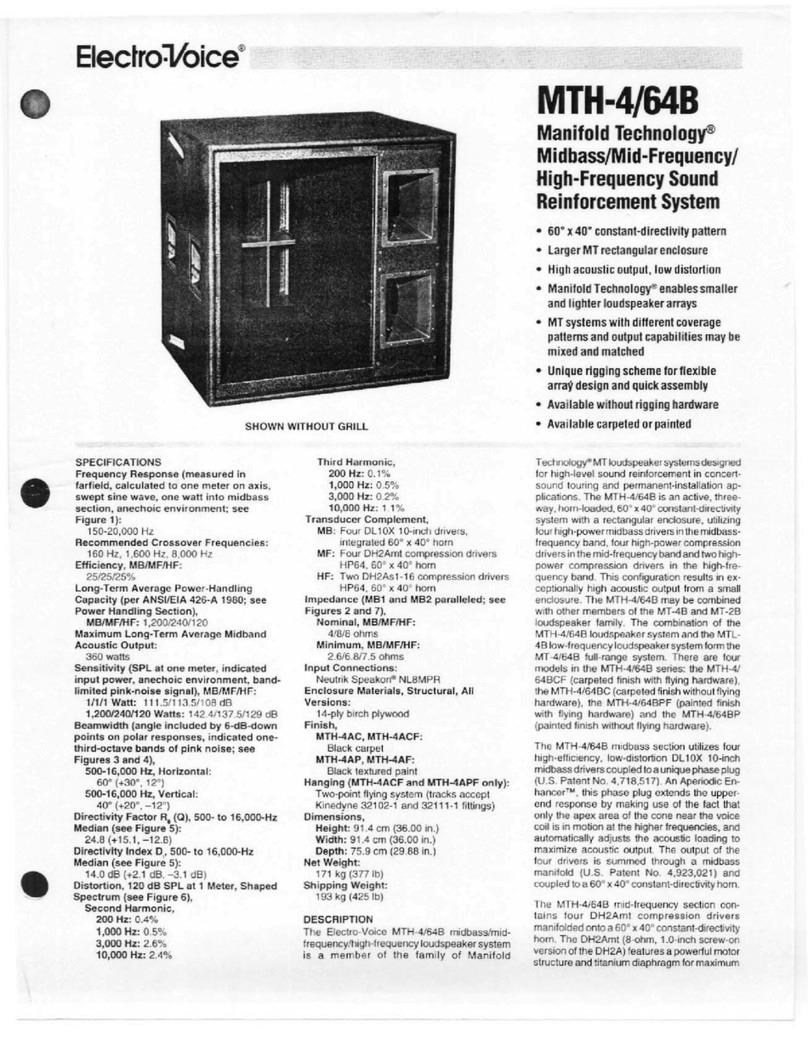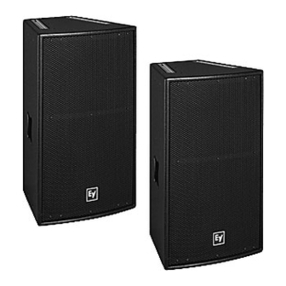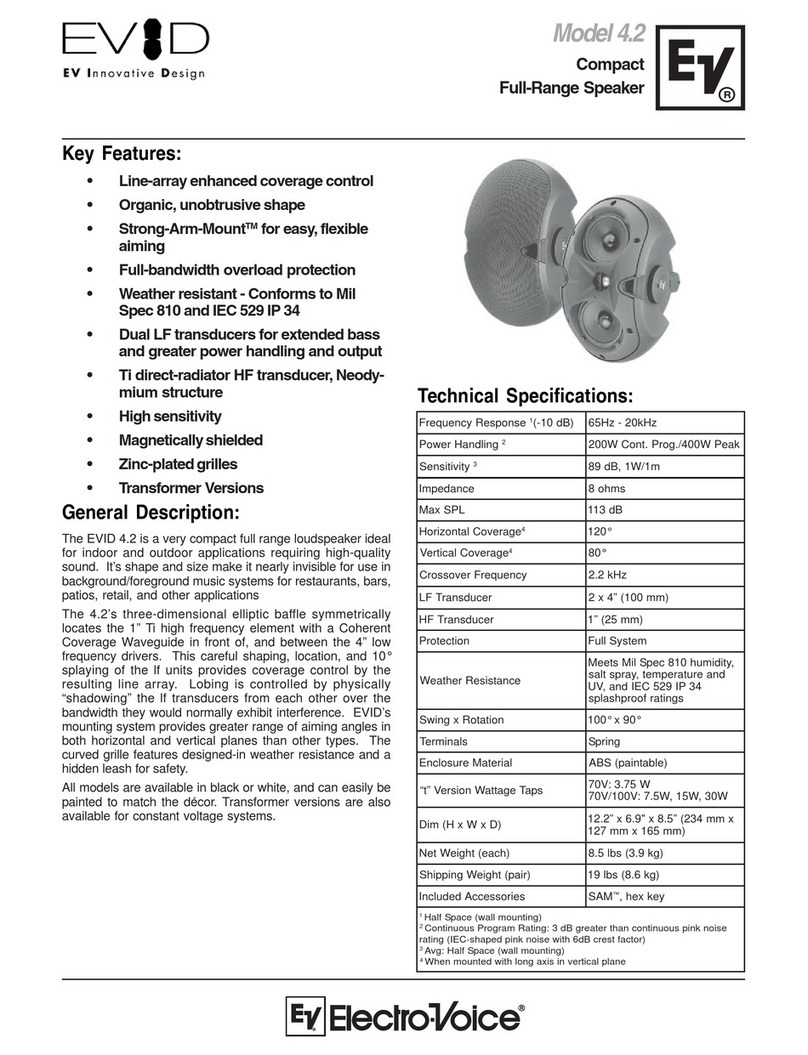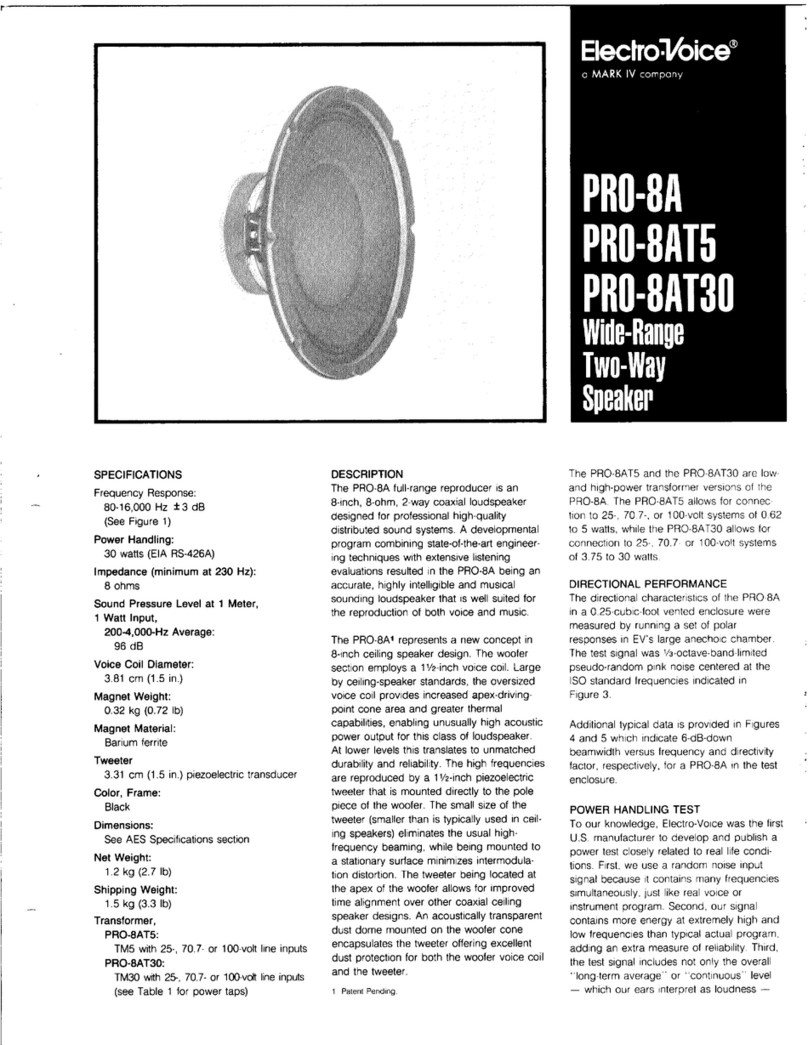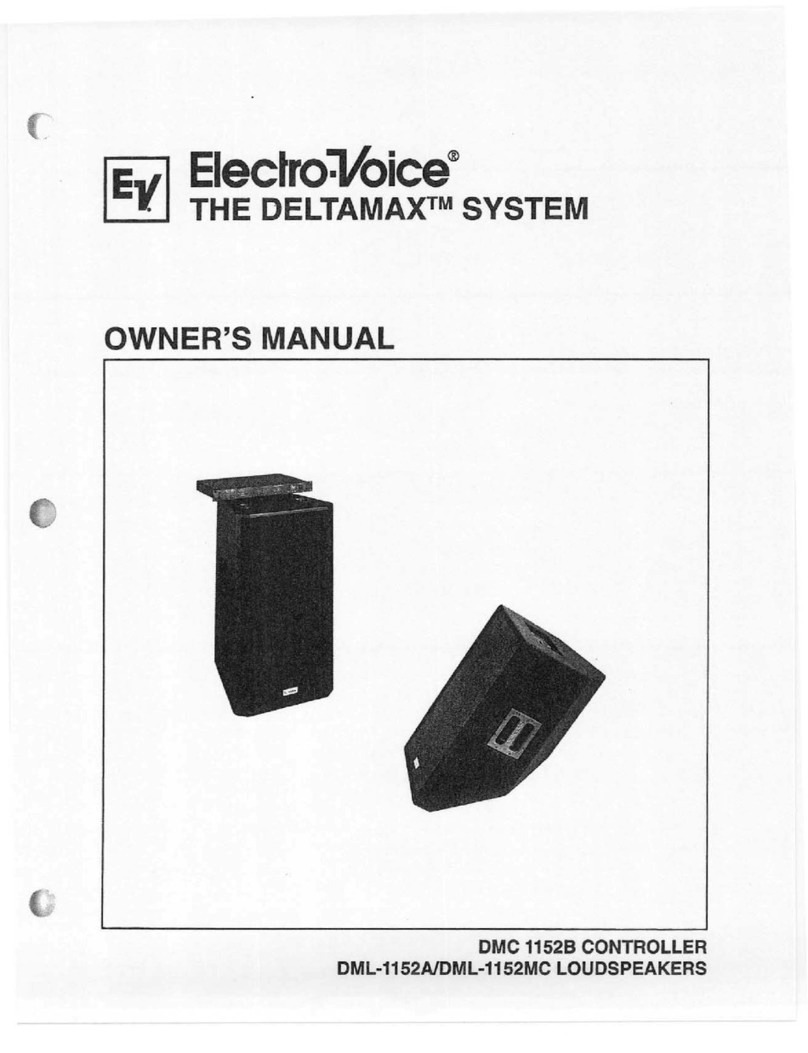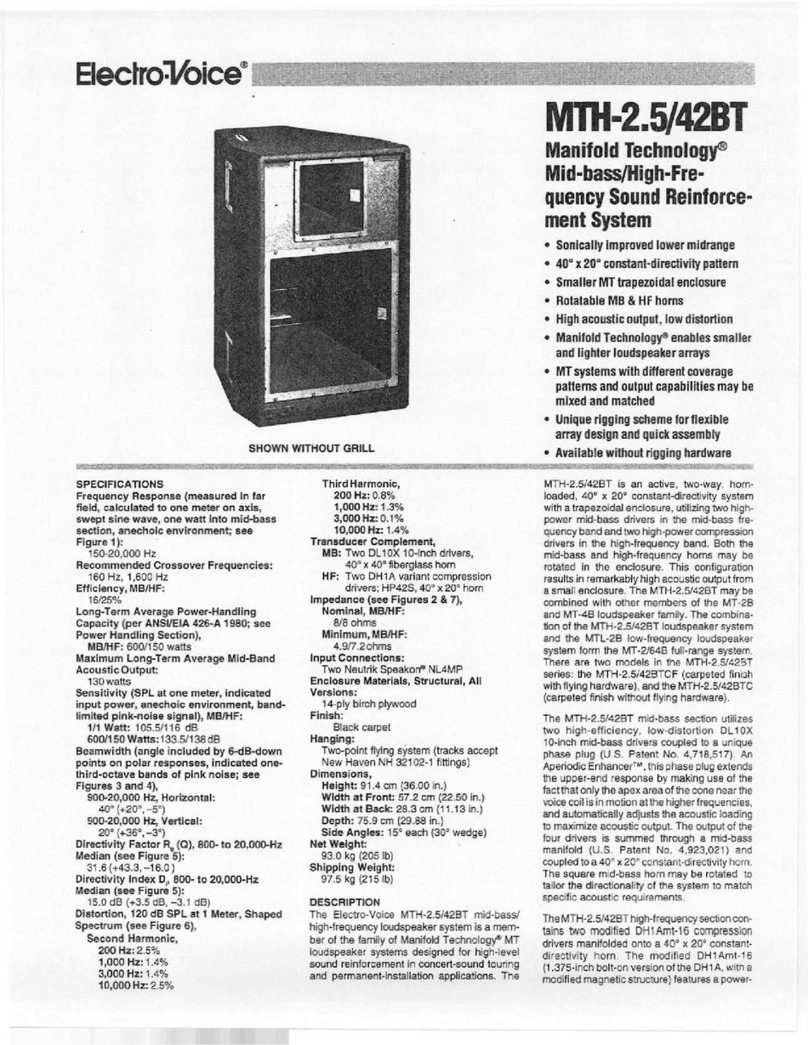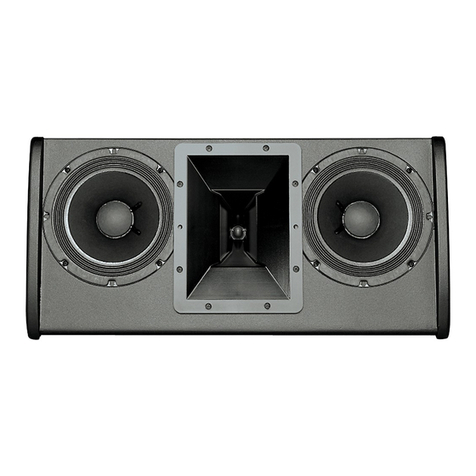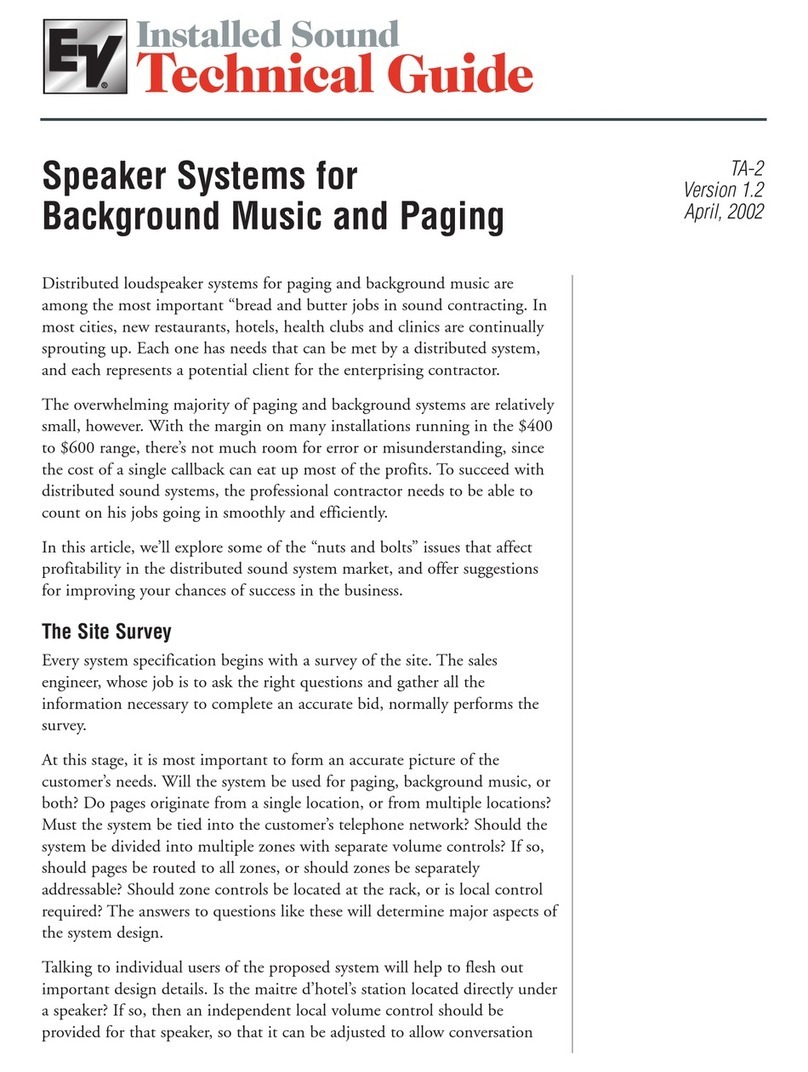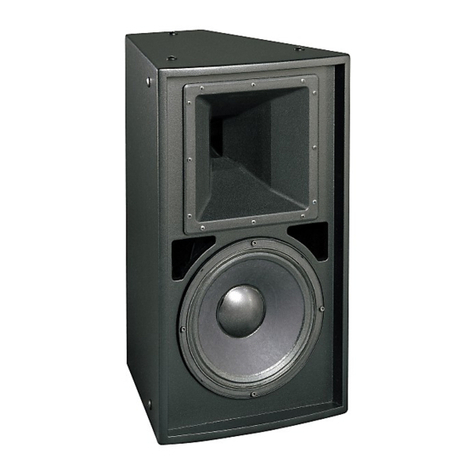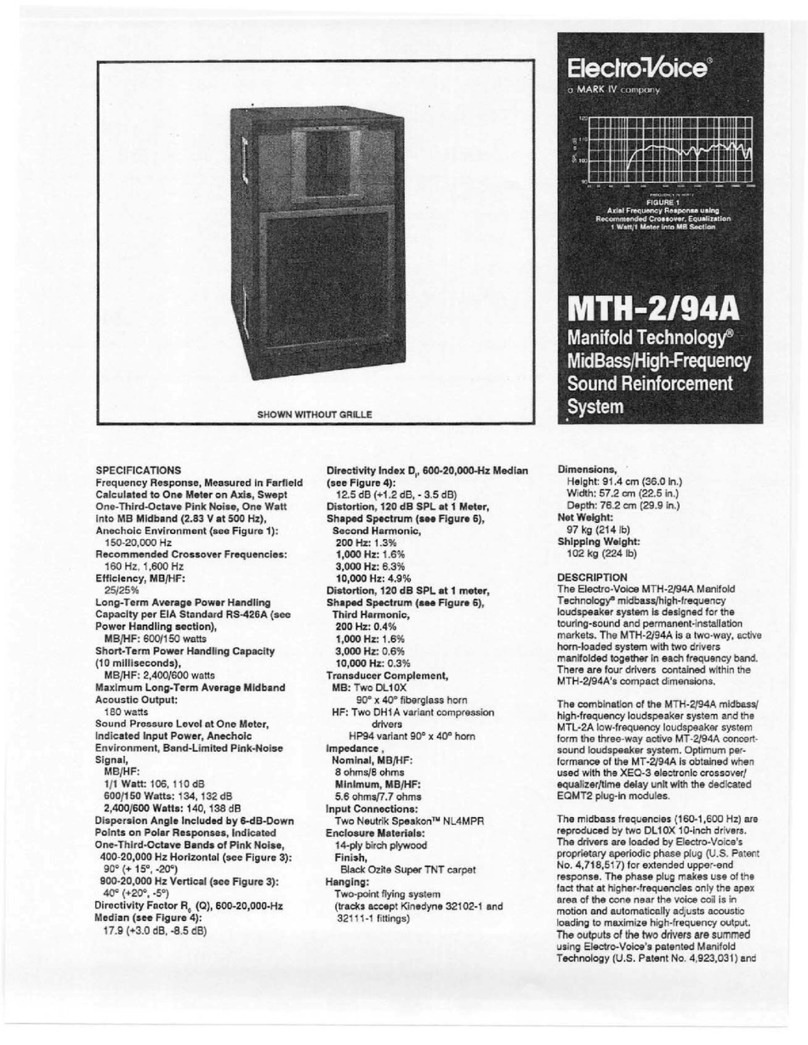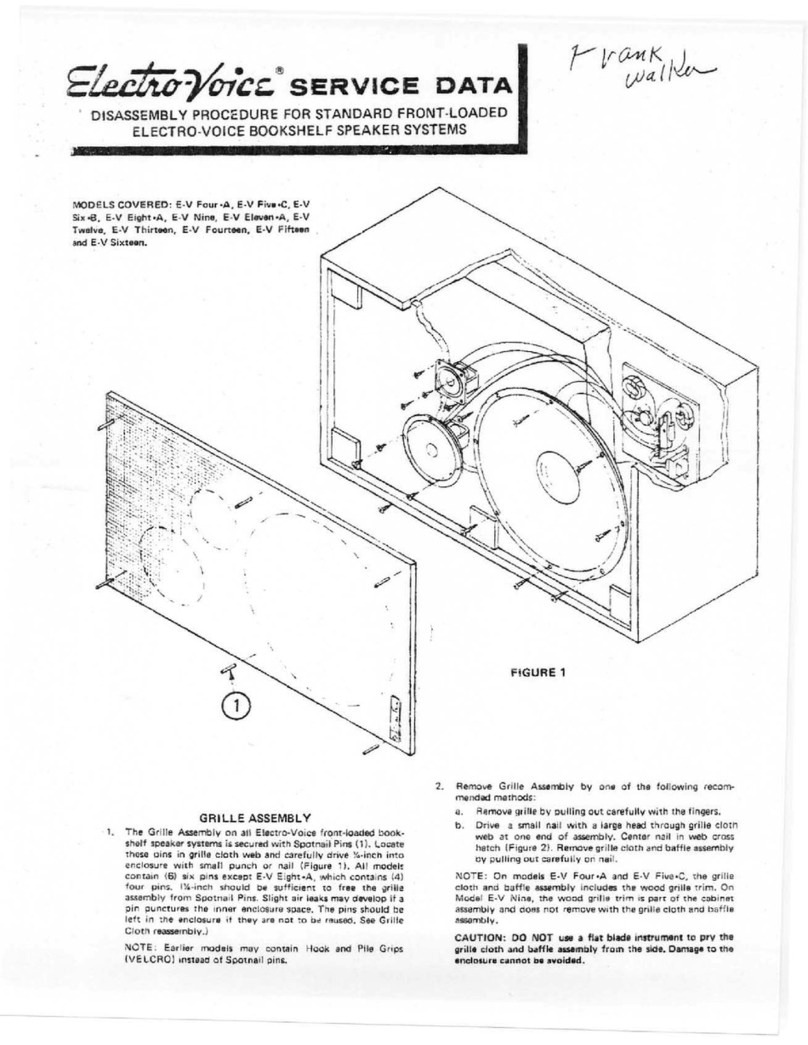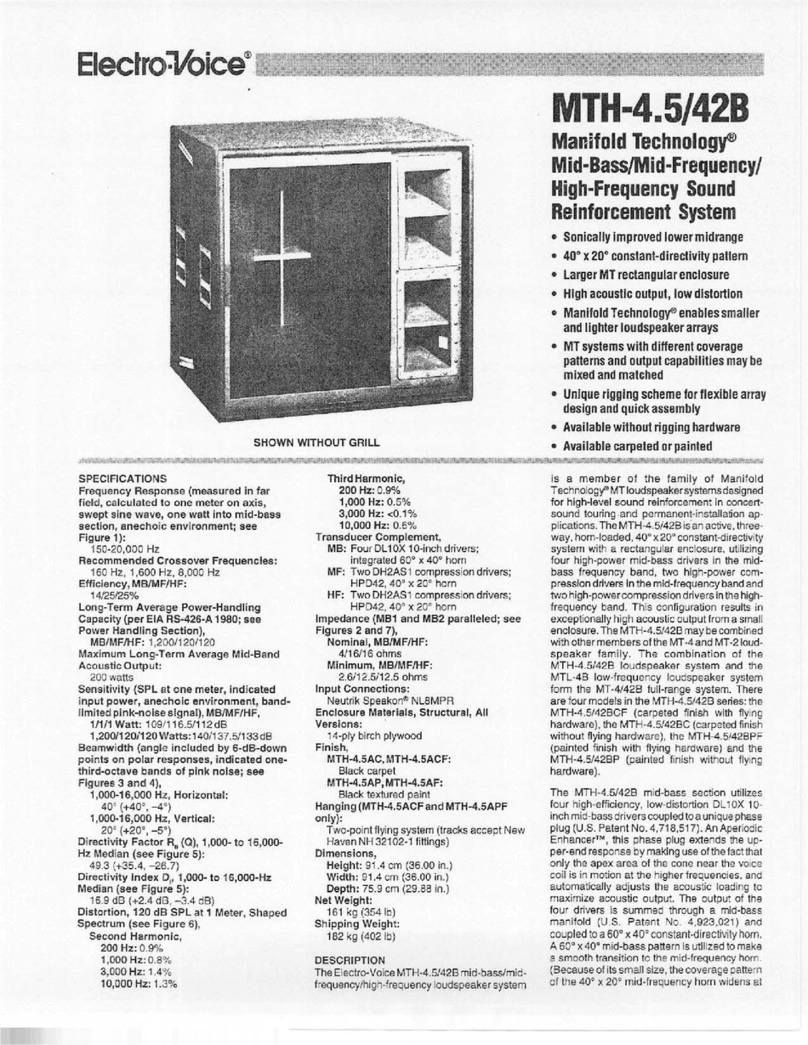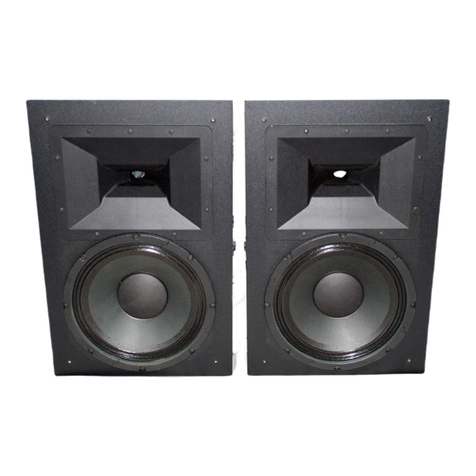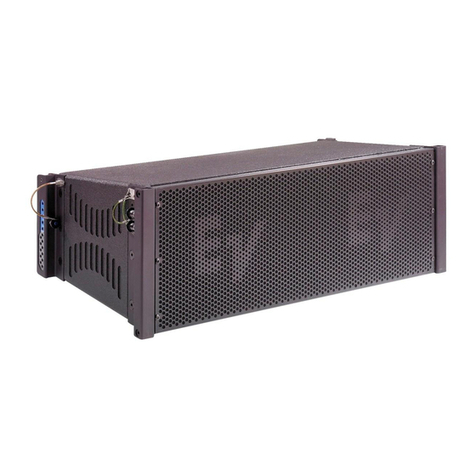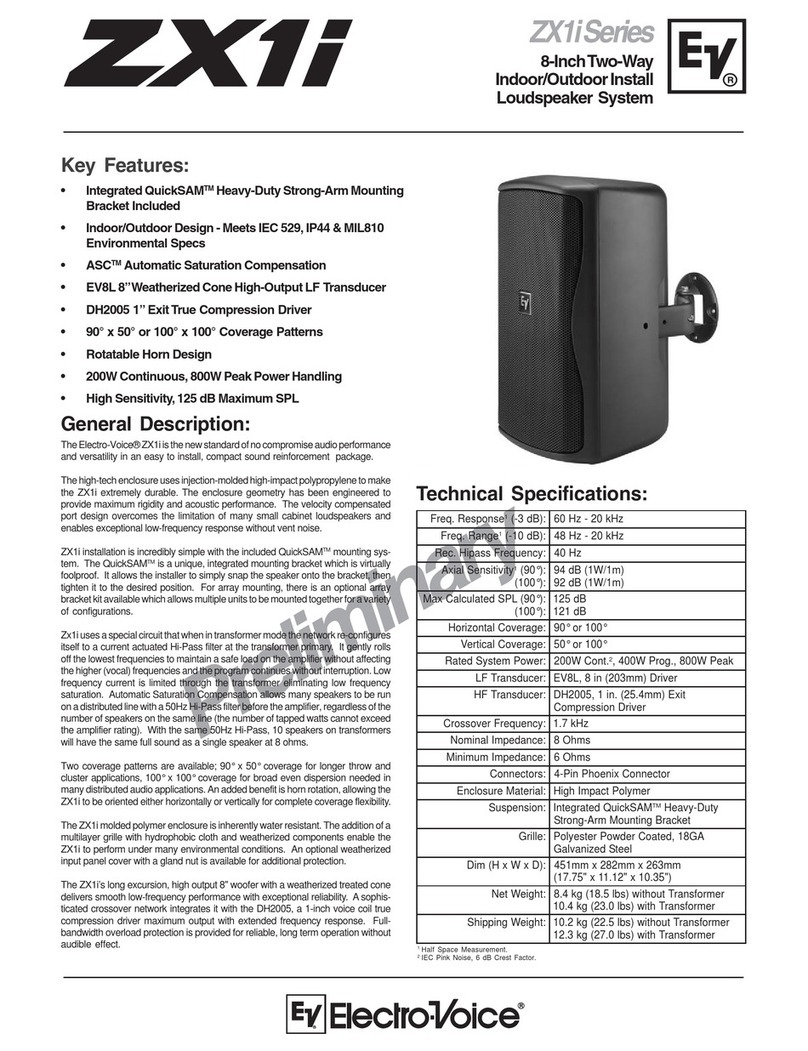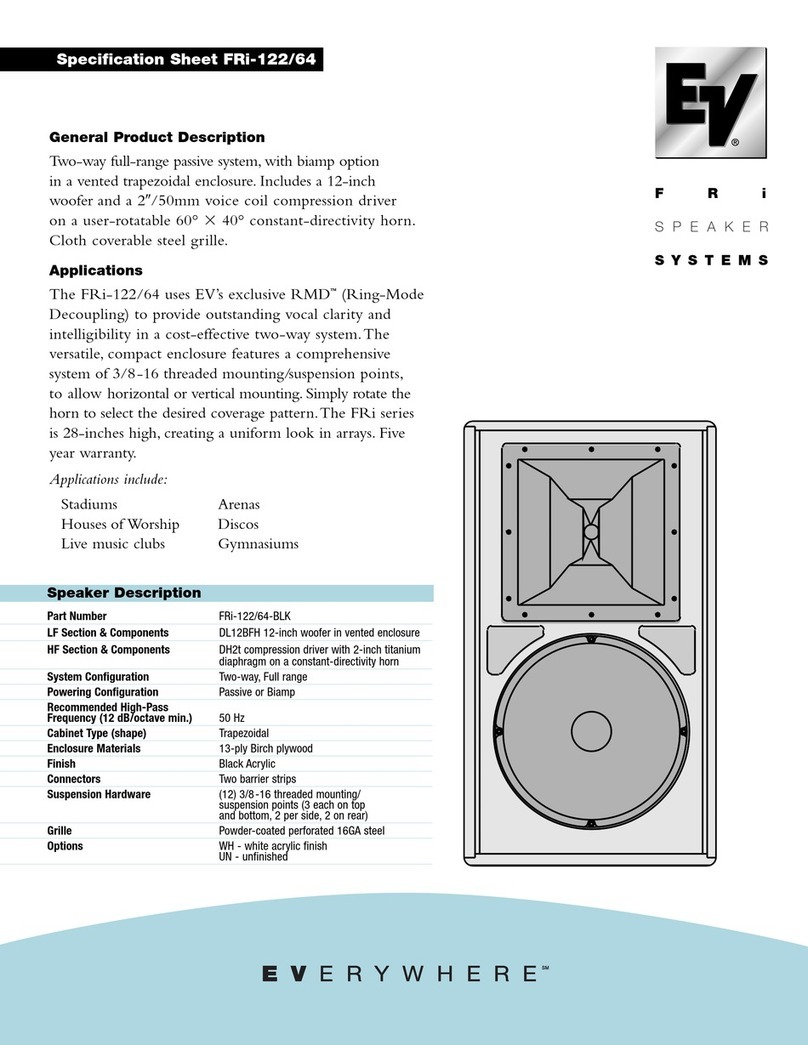Installation and Suspension of
TL880P
Enclosures
The
TL880P
is designed for typical cinema
stage (behind-the-screen) applications where
subwoofers are mounted on the stage floor.
In addition to the following specific infor-
mation, the user may refer to the P1250
owner’s manual.
The
TL880P
is not designed to he self-sus-
pended from above, and if suspended,
must be supported and hung in a way
which does not depend on the structure
of the
TL880P
itself for support.
Overall System Installation
Precautions
Please read the entire engineering data sheet
before connecting the TL880P to your sys-
tem. For optimum performance, observe the
following precautions:
1.
2.
3.
4.
5.
Keep the ac power switch off while
making connections.
Be certain that connectors are tightly
mated. Loose connections cause hum,
noise or intermittences that could dam-
age your speakers.
Use the proper, high-quality shielded
cables in your entire system. Low-ca-
pacitance cable is preferred.
Turn on the electronic equipment which
feeds the
TL880P
first. Wait eight to
ten seconds, then turn on the P1250
amplifier. This prevents any transient
“pop” which could damage a loud-
speaker
To prevent fire or electrical shock, do
not expose the TL880P to rain or ex-
cess moisture.
Driving Multiple
TL880P’s
The
high,
20,000-ohm
input impedance of
the
P1250
power amplifier allows several
TL880P
systems to be connected in parallel
(daisy chained) to the usual single signal
source, without undesirable loading effects
on the source. Extra connectors on the PI 250
facilitate such daisy chaining.
Signal Input and Polarity Convention
The
P1
250 channel A input connector should
be used. It is easily accessible through the
access/vent opening in the speaker enclosure
side closest to the top of the amplifier. The
connector is a three-pin female connector, pin
2 hot. The
TL880P
does not invert polarity,
i.e., a positive voltage on pin 2 of the Pl250’s
input connector produces a positive (out-
ward) movement of the loudspeaker cones.
This relationship is important under some in-
stallation conditions.
P1250 Input Attenuator Settings
In the factory bridged mono mode, only the
channel A input attenuator is operative.
During system set up, the attenuator should
be set in the full-counterclockwise “off’ po-
sition, in order to avoid inadvertent and pos-
sibly excessive output from the
TL880P.
When the
TL88OP
is first operated under sig-
nal conditions, the attenuator should be ad-
vanced only slightly to check for signal in-
tegrity (the
P1250’s
front-panel channel A
green input LED helps in this regard). Once
proper system operation is confirmed, the
control may be advanced to a point that pro-
vides, in conjunction with the chosen drive
level from upstream equipment, the desired
acoustic output level in the room.
System Physical Orientation and Placement
Any orientation of the
TL880P
is acceptable,
as long as the air flow through the power
amplifier is not impeded. A minimum clear-
ance of 76 mm (3 in.) should be maintained.
Architects’ and Engineers’ Specifications
The loudspeaker system shall be an ampli-
tied, dual-low-frequency, bass-reflex design.
Two
18-inch
woofers shall be front mounted
in a 414-liter
(14.6-cuft)
enclosure. The sys-
tem shall meet the following criteria: The
loudspeaker shall be capable of handling a
total of 1,200 watts long-term average with
a
6-dB
crest factor per ANSI/EIA RS-426-A
1980. The system shall reproduce frequen-
cies to below 23 Hz at a usable level when
used in “step-down” mode with the supplied
port cover in place. The combined sensitiv-
ity of the loudspeakers shall be 98
dB
at one
watt, one meter (100 to 800 Hz). The enclo-
sure shall be constructed of black texture
painted plywood containing sound-absorb-
ing glass wool. The amplifier shall be side
mounted and contain the necessary circuitry
to provide all the equalization and protec-
tion needed to operate the system in step
down mode. The system, with minor modifi-
cation, can be used as a conventional vented
box and amplifier. The enclosure dimensions
shall be 1.21m x 0.76m x 0.60m (47.5 in. x
30 in. x 23.8 in.) (hwd) Net weight shall be
89.6 kg (197.5 lb)
The very-low-frequency system shall be the
Electro-Voice
TL880P
Uniform Limited Warranty
Electro-Voice products are guaranteed
against malfunction due to defects in mate-
rials or workmanship for a specified period,
as noted in the individual product-line
statement(s) below, or in the individual prod-
uct data sheet or owner’s manual, beginning
with the date of original purchase. If such
malfunction occurs during the specified pe-
riod, the product will be repaired or replaced
(at our option) without charge. The product
will be returned to the customer prepaid.
Exclusions and Limitations:
The Limited
Warranty does not apply to: (a) exterior fin-
ish or appearance; (b) certain specific items
described in the individual product-line
statement(s) below, or in the individual prod-
uct data sheet or owner’s manual; (c) mal-
function resulting from use or operation of
the product other than as specified in the
product data sheet or owner’s manual; (d)
malfunction resulting from misuse or abuse
of the product; or(e) malfunction occurring
at any time after repairs have been made to
the product by anyone other than Electro-
Voice Service or any of its authorized ser-
vice representatives.
Obtaining Warranty
Service:
To obtain warranty service, a cus-
tomer must deliver the product, prepaid. to
Electro-Voice Service or any of its autho-
rized service representatives together with
proof of purchase of the product in the form
of a bill of sale or receipted invoice. A list
of authorized service representatives is avail-
able from Electro-Voice Service at 600
Cecil Street, Buchanan, MI 49107 (800-234-
6831 or 616-695-6831).
Incidental
and Consequential Damages Excluded:
Product repair or replacement and return to
the customer are the only remedies provided
to the customer. Electro-Voice shall not be
liable for any incidental or consequential
damages including, without limitation, in-
jury to persons or property or loss of use.
